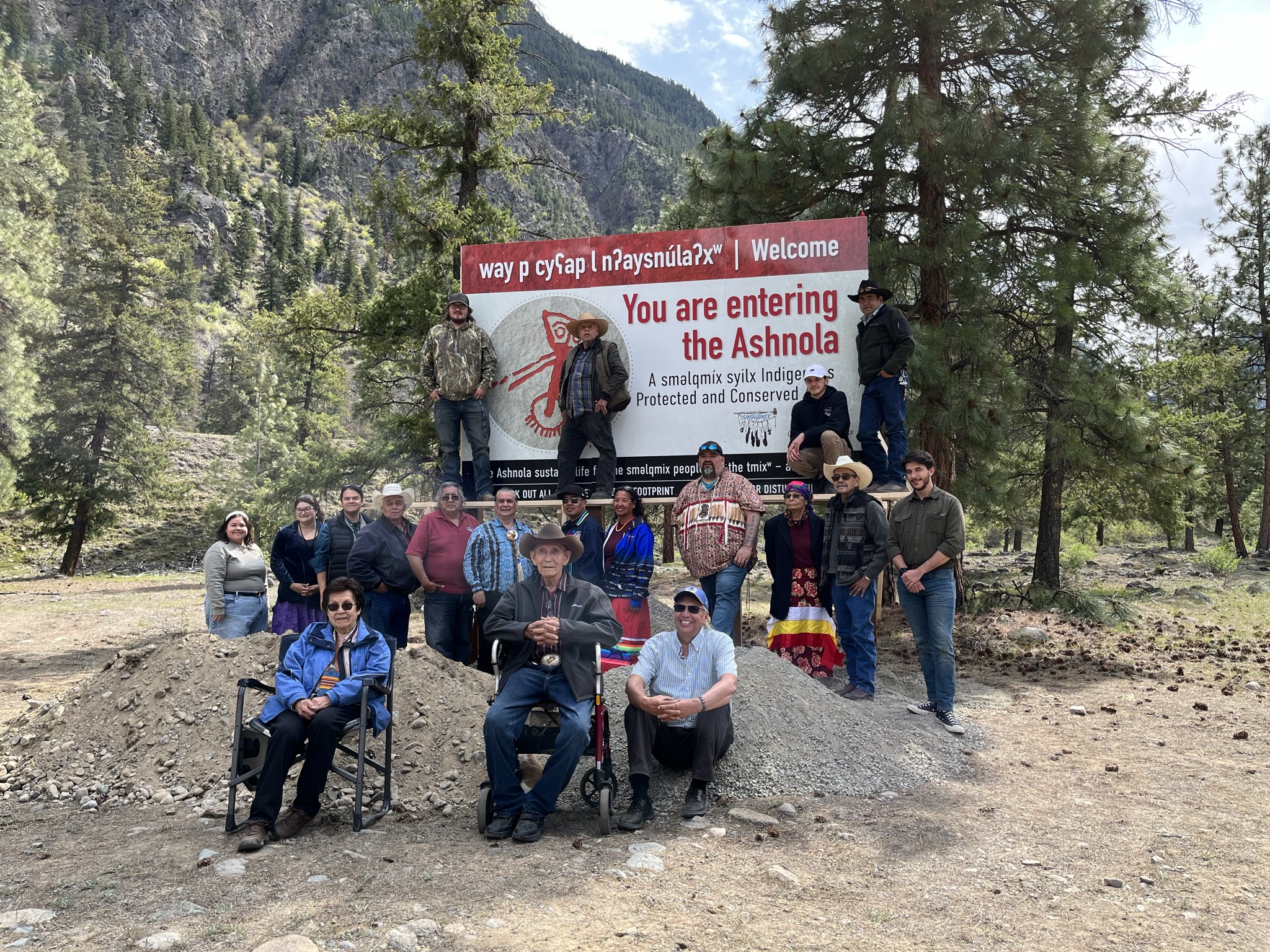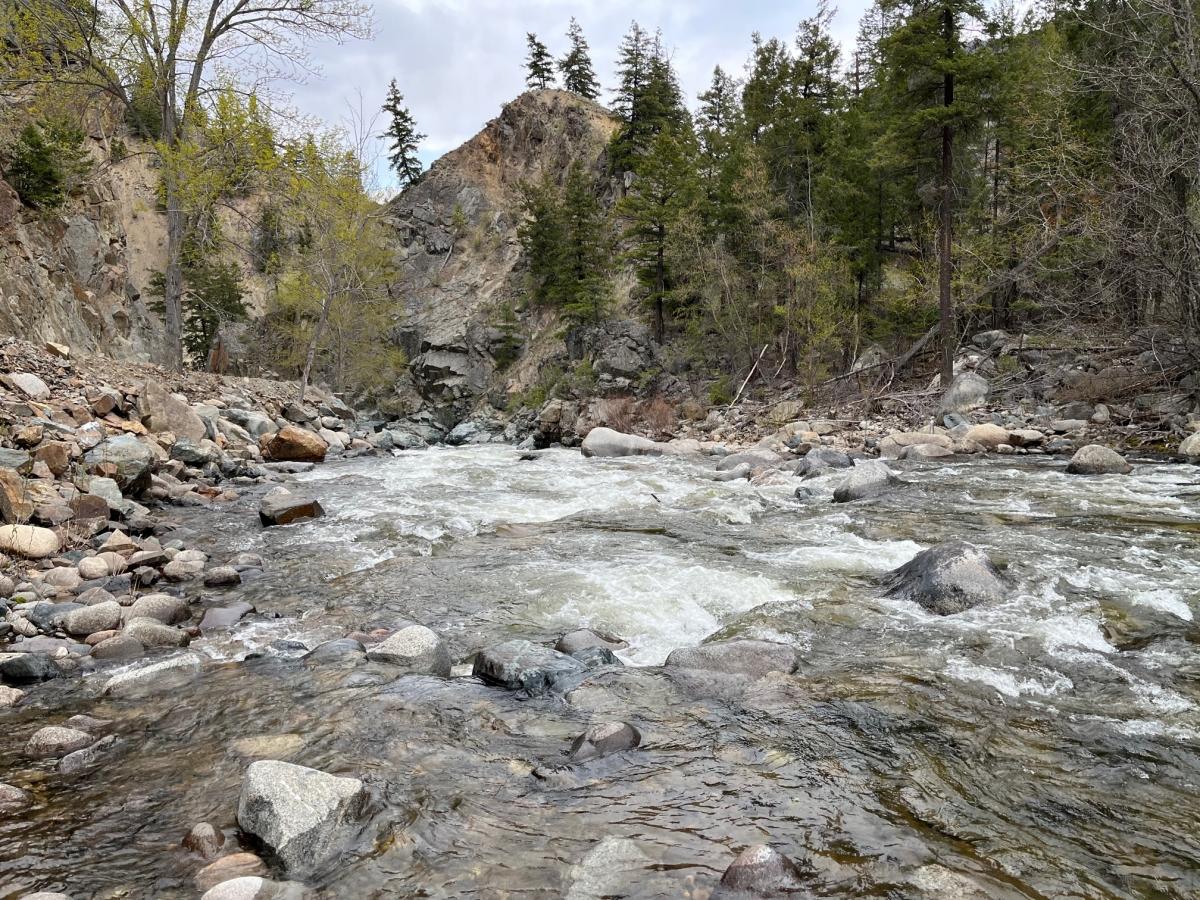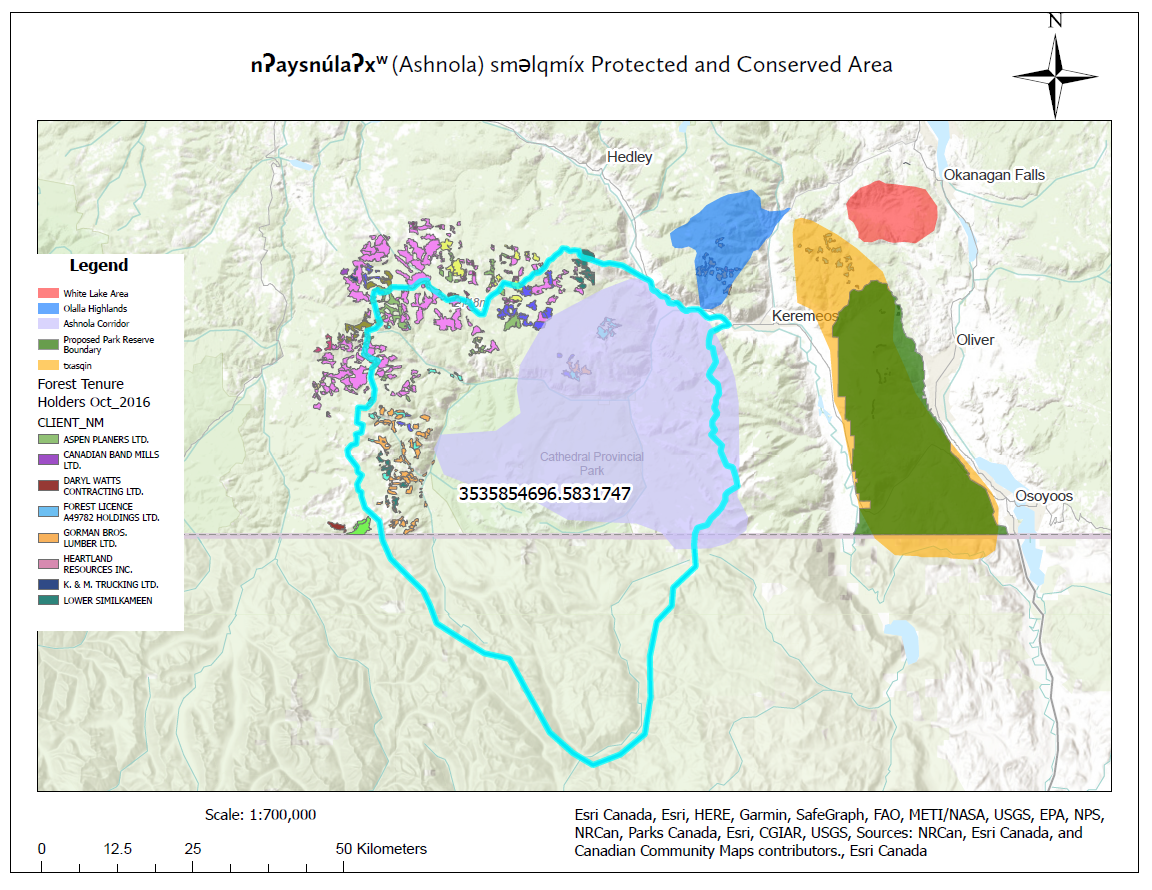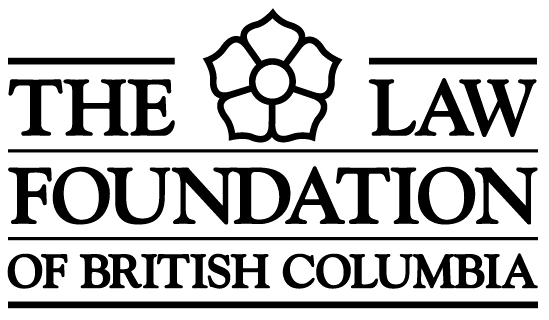
nʔaysnúlaʔxw iʔ k̓̓łluxwnwixwmntət (Ashnola Declaration)
On April 28, 2022, the sməlqmíx, the syilx people of the Similkameen Valley, declared the nʔaysnúlaʔxw snxaʔcnitkw (Ashnola Watershed) in its entirety and for all future generations an Indigenous Protected and Conserved Area (IPCA).
Indigenous Protected and Conserved Areas, also known as IPCAs, “are lands and waters where Indigenous governments have the primary role in protecting and conserving ecosystems through Indigenous laws, governance and knowledge systems.”
The nʔaysnúlaʔxw IPCA will protect water, restore habitat, and safeguard species through active sməlqmíx management according to sməlqmíx / syilx law (such as ceremonial burning), and will have restrictions on uses that are inconsistent with sməlqmíx / syilx law and the purposes of the IPCA.
The sməlqmíx presence on these lands and waters, including on the nʔaysnúlaʔxw, pre-exists Canada, going back to the time of creation. As the nʔaysnúlaʔxw iʔ k̓łluxwnwixwmntət (Ashnola Declaration) makes clear, the sməlqmíx / syilx are a sovereign people who have inherited the spiritual obligations of decision-making authority from nxaʔcin (ancestors) over this territory, nməlqitkw (the Similkameen water system/watershed).
More legal background on the sməlqmíx Ashnola IPCA Declaration may be found here.
Declaration Ceremony on April 28, 2022
The sməlqmíx hosted a celebration and ceremony to sign and witness the nʔaysnúlaʔxw iʔ k̓łluxwnwixwmntət (Ashnola Declaration) that established the Ashnola IPCA. The event was attended by the sməlqmíx community, neighbouring relatives from the Colville Tribes and other syilx communities, allies, dignitaries, government officials, and the wider community of the Similkameen Valley. The day was grounded in ceremony, through prayer, songs, and drumming. The day’s festivities took place under the sun, in the open-air Ashnola Powwow Grounds, nestled beside the Ashnola River and surrounded by the Okanagan Mountains.
sməlqmíx elders, Chief and Council, and members of the community spoke throughout the day about their collective hopes for the future of the nʔaysnúlaʔxw. The declaration was read aloud in nsyilxcən and in English, to acknowledge the sacred responsibility and duty to the water that requires the sməlqmíx to act as caretakers of the lands. All who were present at the ceremony had the opportunity to sign the declaration, identifying themselves as witnesses of this historic day.
 Lower Similkameen Chief and Council share their hope for the future of the nʔaysnúlaʔxʷ, and reflect on the community’s journey so far.
Lower Similkameen Chief and Council share their hope for the future of the nʔaysnúlaʔxʷ, and reflect on the community’s journey so far.
 Lauren Terbasket and Rob Edward read the declaration.
Lauren Terbasket and Rob Edward read the declaration.
 Witnesses representing the North, East, South, and West, sign the declaration after the blanketing ceremony.
Witnesses representing the North, East, South, and West, sign the declaration after the blanketing ceremony.
The nʔaysnúlaʔxw snxaʔcnitkw (Ashnola Watershed)
The nʔaysnúlaʔxw is an essential watershed. Its waters are iʔ siwłkw sq̓aq̓łus iʔ təmxwúlaʔxw (veins of the land), providing cold, pure siwłkw (water) for the təmxwúlaʔxw (land) and tmixw (the life force within all four sacred ecosystems). The nʔaysnúlaʔxw is a place of connection, a great trade and migration route of historic and present cultural significance.
The nʔaysnúlaʔxw is alive and is teeming with tmixw, both big and small, including many species at risk. It is one of the last pristine stream systems in sməlqmíx territory. Protecting the waters of the nʔaysnúlaʔxw is essential to ensuring the well-being of sməlqmíx, tmixw, and the land, as well as that of Similkameen settlers.
sməlqmíx elders have directed that the protection of the nʔaysnúlaʔxw snxaʔcnitkw cannot be seen in isolation. In addition to the Ashnola watershed, the cktṕ ikn (Olalla Highlands), the sḱaʔitkw (Skagit), and the akɬ túlmn (Tulameen) are priority areas that are needed to sustain the water and ecosystems of our homeland.

The life-giving waters of the nʔaysnúlaʔxw
 After lunch, the community and guests sign the declaration.
After lunch, the community and guests sign the declaration.
kwwu xik̓ək̓ (where we have gone wrong)
For too long, economic exploitation has characterized land use decisions in the Ashnola and elsewhere in sməlqmíx territory. This exploitation includes usurpation of sməlqmíx economics and trade – loss of trap lines and range tenures to settlers, destruction of trade trails, expropriation of cabins, imposition of a ‘permit system’ for hunting and fishing, granting of guide outfitter licences, and sequestering syilx people on reserves and requiring permissions to leave.
The legacy of colonialism and denial of sməlqmíx / syilx jurisdiction and law over the past 160 years is profound. It is a legacy of dispossession, degraded lands, diminishing wildlife, wildfires, mining pollution, water pollution and ongoing threats to water quality and quantity.
Interests rooted in natural resource exploitation are not our interests, rather we are guided by our laws and lessons in our language, in our stories, from the land, waters, tmixw, and our elders. Management with these elements as guideposts will result in a land which continues to heal and is restored to provide clean water and robust biodiversity.
From a sməlqmíx / syilx law perspective we look to the healthy lands and waters of the territory prior to contact as a benchmark against which to measure impacts in the territory in order to set a pathway to healing/target for restoration.
The Ashnola IPCA is a shift away from this colonial history and current mismanagement toward a healthier and more sustainable future that honours sməlqmíx law and knowledge. Answers to frequently asked questions about the Ashnola IPCA may be found here.
 Celebrating the hard work of Lower Similkameen Parks Working Group and RELAW team members. (Not pictured: WCEL Staff Lawyers Rayanna Seymour-Hourie and Shelby Lindley)
Celebrating the hard work of Lower Similkameen Parks Working Group and RELAW team members. (Not pictured: WCEL Staff Lawyers Rayanna Seymour-Hourie and Shelby Lindley)
RELAW: Revitalizing Indigenous Law for Land, Air, and Water
West Coast Environmental Law’s RELAW team (Revitalizing Indigenous Law for Land, Air and Water) is honoured to have supported our sməlqmíx partners in their historic nʔaysnúlaʔxw snxaʔcnitkw (Ashnola IPCA Declaration). RELAW provides legal support to the sməlqmíx in a number of initiatives related to the revitalization, expression and enforcement of sməlqmíx / syilx law for siwłkw (water) the təmxwúlaʔxw (land) and tmixw (the life force within all four sacred ecosystems) through a Learning Partnership established in 2019.
West Coast recognizes that Indigenous law is law, and that Indigenous law can and should be used on the ground today. RELAW assists in the work of researching, applying, and enforcing sməlqmíx / syilx law. Through hands-on collaboration and in-depth discussions, our teams worked together to develop the historic nʔaysnúlaʔxw snxaʔcnitkw (Ashnola Declaration), and the broader legal strategy related to the expression and enforcement of sməlqmíx / syilx law.
This work is grounded in guidance from sməlqmíx elders and the community, and teachings embedded in nsyilxcən and the captikwɬ (story systems / doctrine for the transfer of knowledge). Our sməlqmíx team members have a clear, strong vision for the future of sməlqmíx decision-making and caretakership in their territory. Through the IPCA Declaration, sməlqmíx decision-making authority has been affirmed, and next steps for implementation and enforcement of sməlqmíx / syilx law are underway.
Our RELAW team looks forward to continuing to work with the sməlqmíx to support in upholding sməlqmíx decision-making authority in the nʔaysnúlaʔxw snxaʔcnitkw (Ashnola Watershed), implementing enforcement mechanisms, and developing a tmixw law – an expression of sməlqmíx / syilx law that focuses on the life force within the four sacred ecosystems.
To learn more:
- nʔaysnúlaʔxʷ (Ashnola) IPCA Declaration Poster: nsyilxcən | English
- nʔaysnúlaʔxʷ (Ashnola) IPCA Informational Two-Pager
- nʔaysnúlaʔxʷ (Ashnola) IPCA Legal Backgrounder Booklet
- nʔaysnúlaʔxʷ (Ashnola) IPCA Frequently Asked Questions
West Coast gratefully acknowledges the Law Foundation of British Columbia, Sitka Foundation, Swift Foundation, Wilburforce Foundation, Patagonia and Metcalf Foundation for their financial support of this work through our RELAW program.






